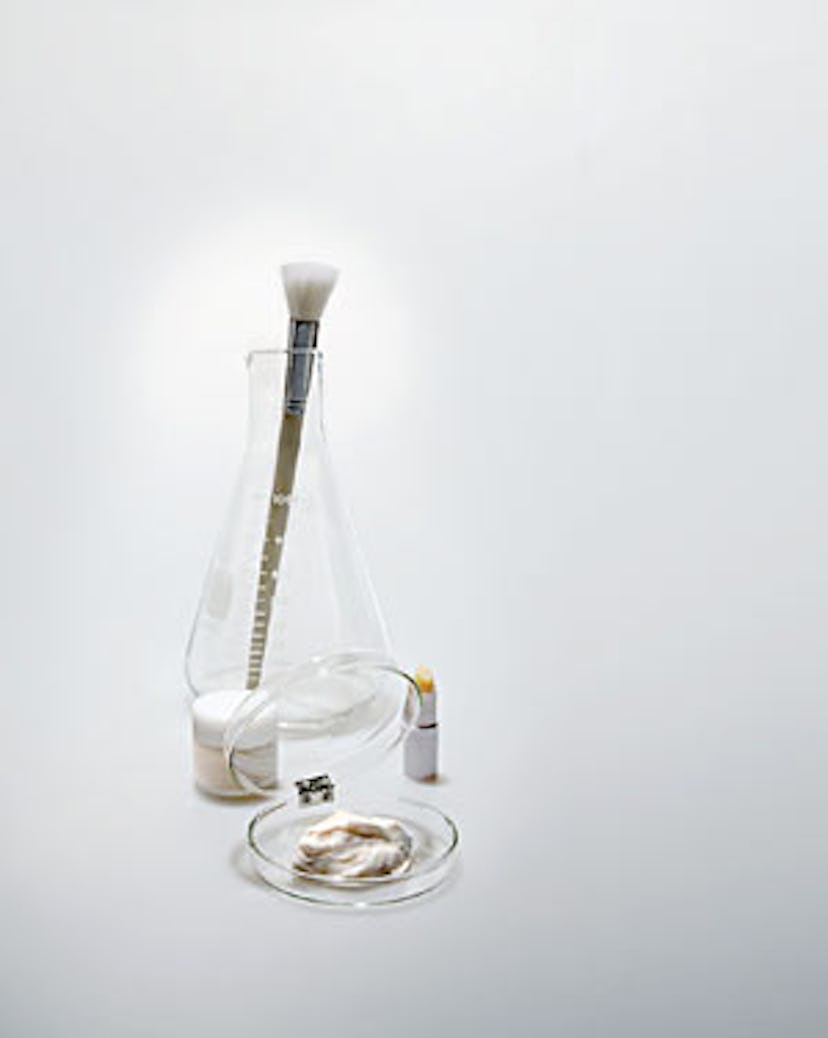Culture Club

As our Purell-mania attests, we’re a nation of germophobes. But we needn’t be—at least where friendly germs are concerned. These health-promoting bacteria, also called probiotics, help keep harmful microbes in check and may even stimulate the immune system, among other benefits. Interest in the category has exploded in recent years, thanks to claims that edible probiotics such as those in Dannon’s Activia yogurt aid digestion. Now cosmetics companies are getting in on the act. While the study of topical probiotics is still in its early stages, a growing number of skincare labels are taking a cue from the local grocery store and injecting “good” bacteria into their antiaging formulas, convinced that these microbes also benefit skin in multiple ways, from preventing acne to promoting cell renewal.
The first major skincare line based on probiotics, Nude, was launched in 2007 by eco-entrepreneur Bryan Meehan, founder of the UK’s Fresh & Wild organic food chain, who believed that putting a dose of healthy bacteria on the skin would help protect it. Sylvie Chantecaille, whose luxe eponymous line is known for its innovative ingredients, claims that “probiotics get rid of bad bacteria on the skin, just as yogurt eliminates negative bacteria in the stomach.” Though eradicating bad bacteria is thought to stave off breakouts and infections, just what long-term impact probiotics have on the skin has yet to be proved. Each strain of probiotics affects the skin differently, Chantecaille says, noting that a culture in her Vital Essence is meant to improve skin clarity, while a strain she hopes to debut next year aims to prompt collagen production.
Next fall plastic surgeon and RéVive founder Gregory Bays Brown will launch Font, a line based on a probiotic that, Brown says, was responsible for Preparation H’s famed instant tightening effect. Trade named Biodynes, it contains “growth factors that go into a skin cell and stimulate cell division,” explains Brown, who points out that though Biodynes is no longer used in Preparation H in the U.S., it is found in RéVive’s eye-firming Masque des Yeux and Acne Reparatif treatment and will play a starring role in Font’s day and night creams.
Taking a slightly different tack, Clinique Medical, which debuted last fall and is sold only in doctors’ offices, doesn’t contain live bacteria but instead promotes the growth of skin’s own helpful bacteria to prevent infection following chemical peels and laser treatments.
Miami dermatologist Leslie Baumann recognizes the potential of helpful bacteria to treat skin disorders such as acne and eczema, but thinks more research is needed before the microbes should be used cosmetically. “I’m a believer in [probiotic] supplements, but no one has proved that probiotics work on skin,” she says. “The bacteria in your colon are not the same as those on your skin, so you can’t make the leap that if probiotics work internally, they’re going to work topically.” And while Meriden, Connecticut, dermatologist Nicholas Perricone offers oral probiotic supplements in his eponymous antiaging line, he agrees that the trend merits further exploration, particularly with probiotics found in dairy products. To anyone up for an at-home experiment, Perricone suggests that they “take a fresh fermented milk product right out of the fridge, make a mask, put it on, and relax.”